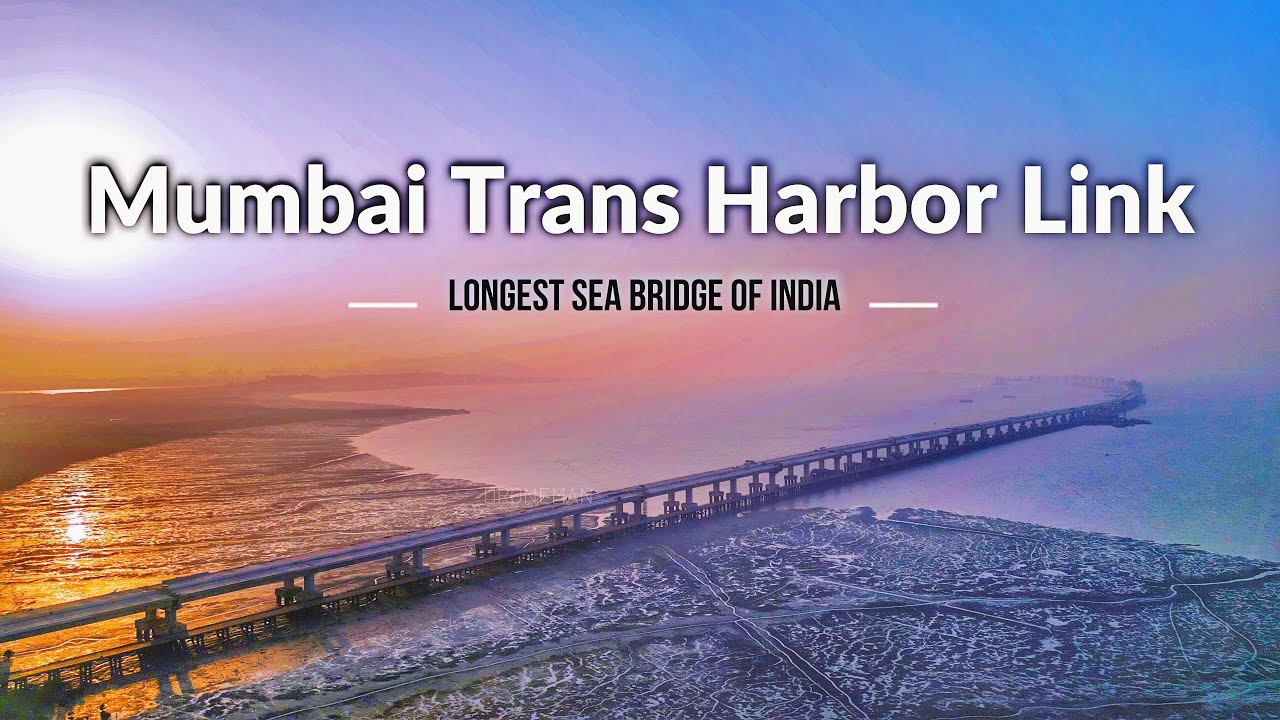Mumbai Trans Harbour Link the longest sea bridge in India and the 12th longest in the world was recently inaugurated by Prime Minister Narendra Modi. The inauguration of the link that is officially known as the Shri Atal Bihari Vajpayee Trans Harbour or the Sewri–Nhava Sheva Trans Harbour Link comes approximately 3 decades since it was conceptualized.
Back in the 1990s, the Mumbai Metropolitan Region Development Authority (MMRDA) planned to build a comprehensive link between Mumbai and Navi Mumbai. The proposal was sent to the Government of Maharashtra for consideration in 2012 and it was approved by the Government of India and the Ministry of Road Transport and Highways (MoRTH) in 2015.
In December 2016, Prime Minister Narendra Modi laid the foundation stone for the longest sea bridge in India. MMRDA awarded contracts for the project in November 2017 while the actual construction works began in April 2018.
The project was initially set to be completed by 2021. The date was later adjusted to 2022, however, the project was delayed by approximately 8 months due to the COVID-19 pandemic. As a result, the completion date was pushed again to August 2023 but still missed the deadline. It was finally completed in December 2023 at a total cost of US$ 2.2 billion.
85% of the cost of the longest sea bridge in India was taken care of by the Japan International Cooperation Agency (JICA) and the rest by the state and central governments.
An Overview of the Mumbai Trans Harbour Link

Colloquially known as Atal Setu, the Mumbai Trans Harbour Link is a 22-kilometre elevated highway bridge that connects Mumbai with Navi Mumbai. With a total of 6 lanes, (3+3) and 1 emergency lane on both sides, the bridge starts in Sewri, South of Mumbai, then crosses Thane Creek, north of Elephanta Island, to terminate at Chirle near Nhava Sheva in Uran taluka, Navi Mumbai.
Mumbai Trans Harbour Link has a 16.5-kilometre sea bridge and 5.5 kilometres of viaducts on land on either end. On the Sewri-end of the bridge, a three-level interchange will connect with the under-construction Sewri-Worli Elevated Corridor as well as the Eastern Freeway. On the Navi Mumbai end, on the other hand, the bridge has an interchange at Shivaji Nagar and Chirle.
This concrete bridge features a 4-kilometre steel span section in the middle to allow for ships to pass underneath. The longest span of the bridge is 180 meters, the longest steel span in India, while the shortest span is 100 meters long.
With a design speed of 100 kilometres per hour, the longest sea bridge in India features an intelligence transport system (ITS) and other amenities required for a marine bridge. Traffic will be monitored and managed from a traffic control centre with the help of CCTV cameras and related facilities. Variable message signs (VMS) have also been installed on the bridge which is the first in Idia to use orthotropic decks.
The bridge also features noise barriers near the Sewri mud flat area and view barriers at the Bhabha Atomic Research Centre (BARC).
Also Read
Thailand to build a land bridge between the Indian and Pacific Oceans
New Versova Bridge project in India gears up for completion in 2023
Anji Khad Bridge, the first cable-stayed railway bridge in India
